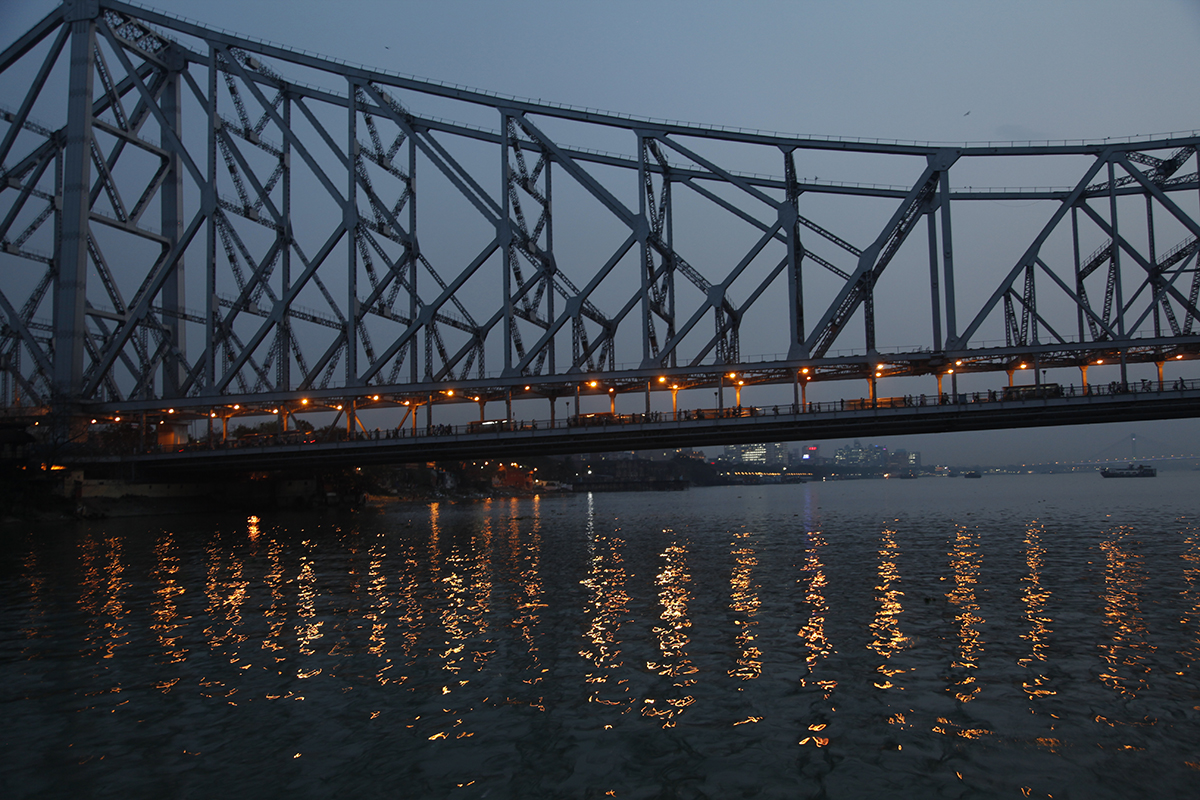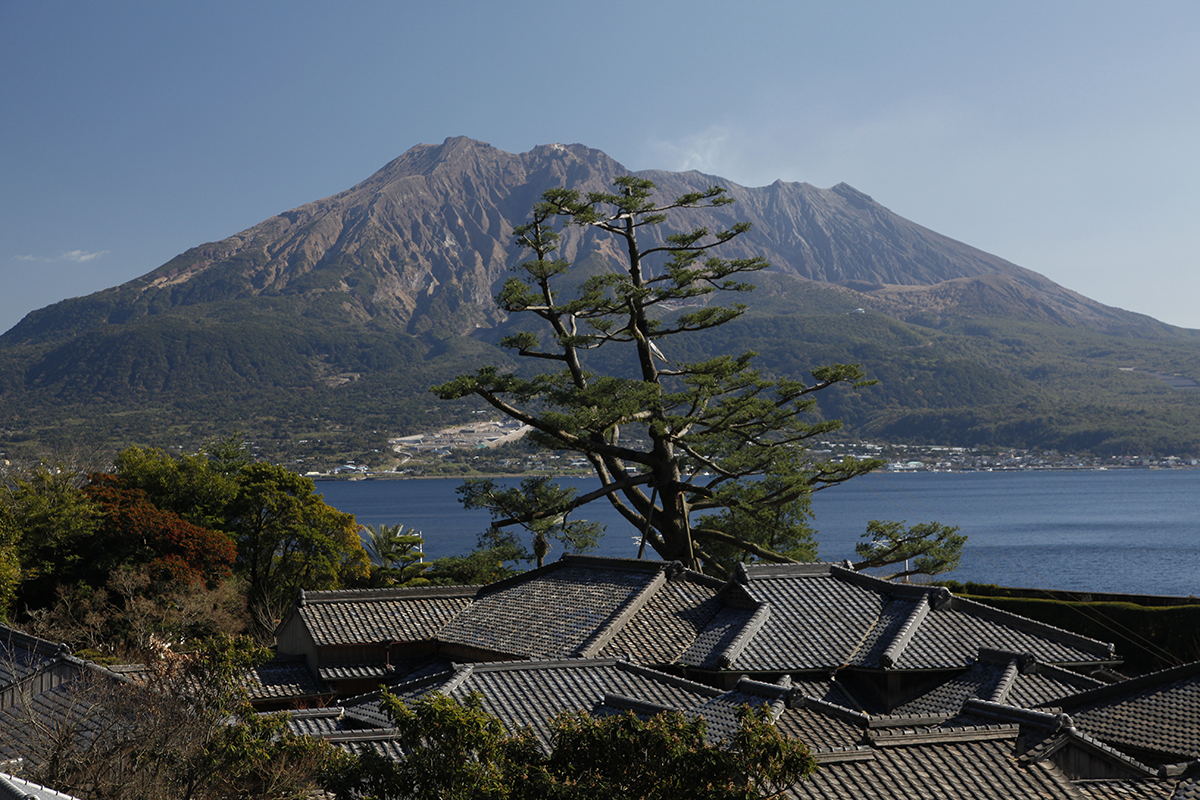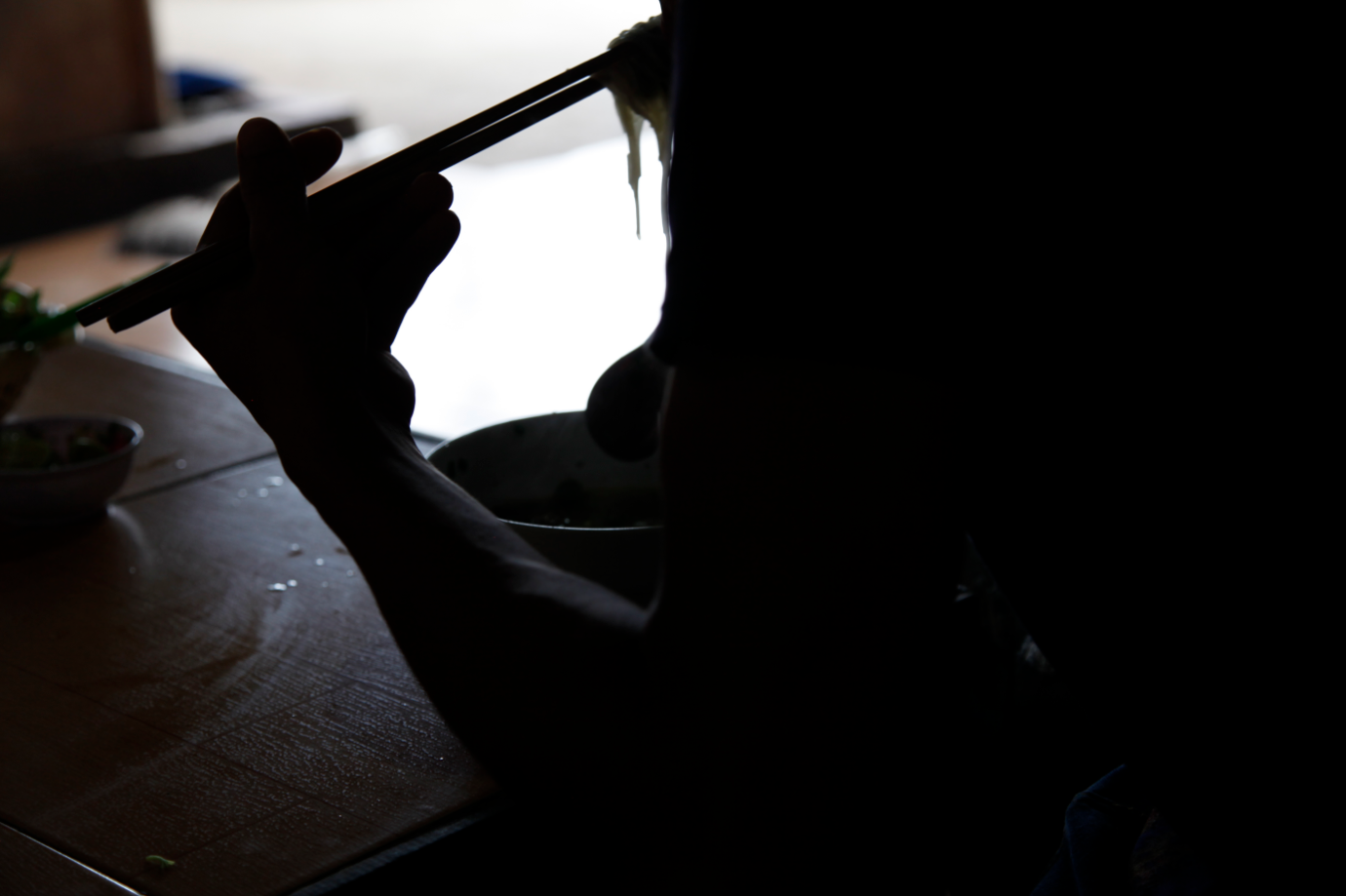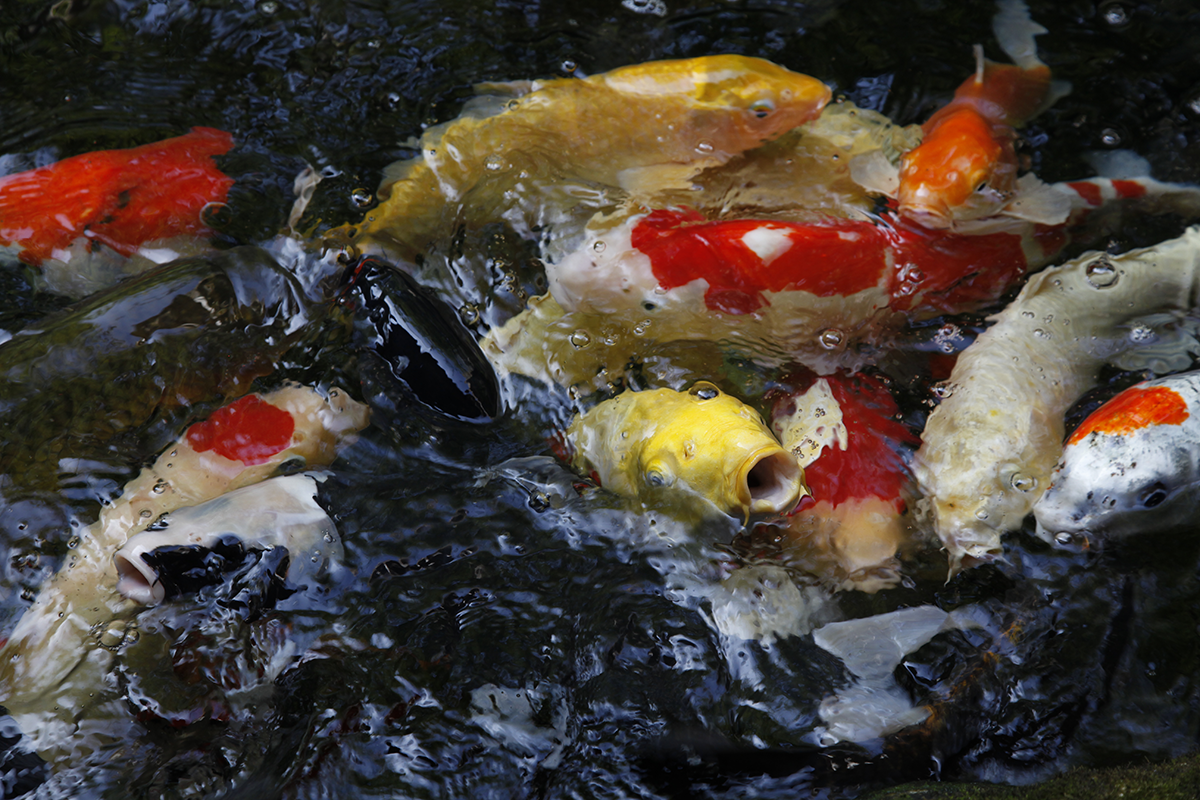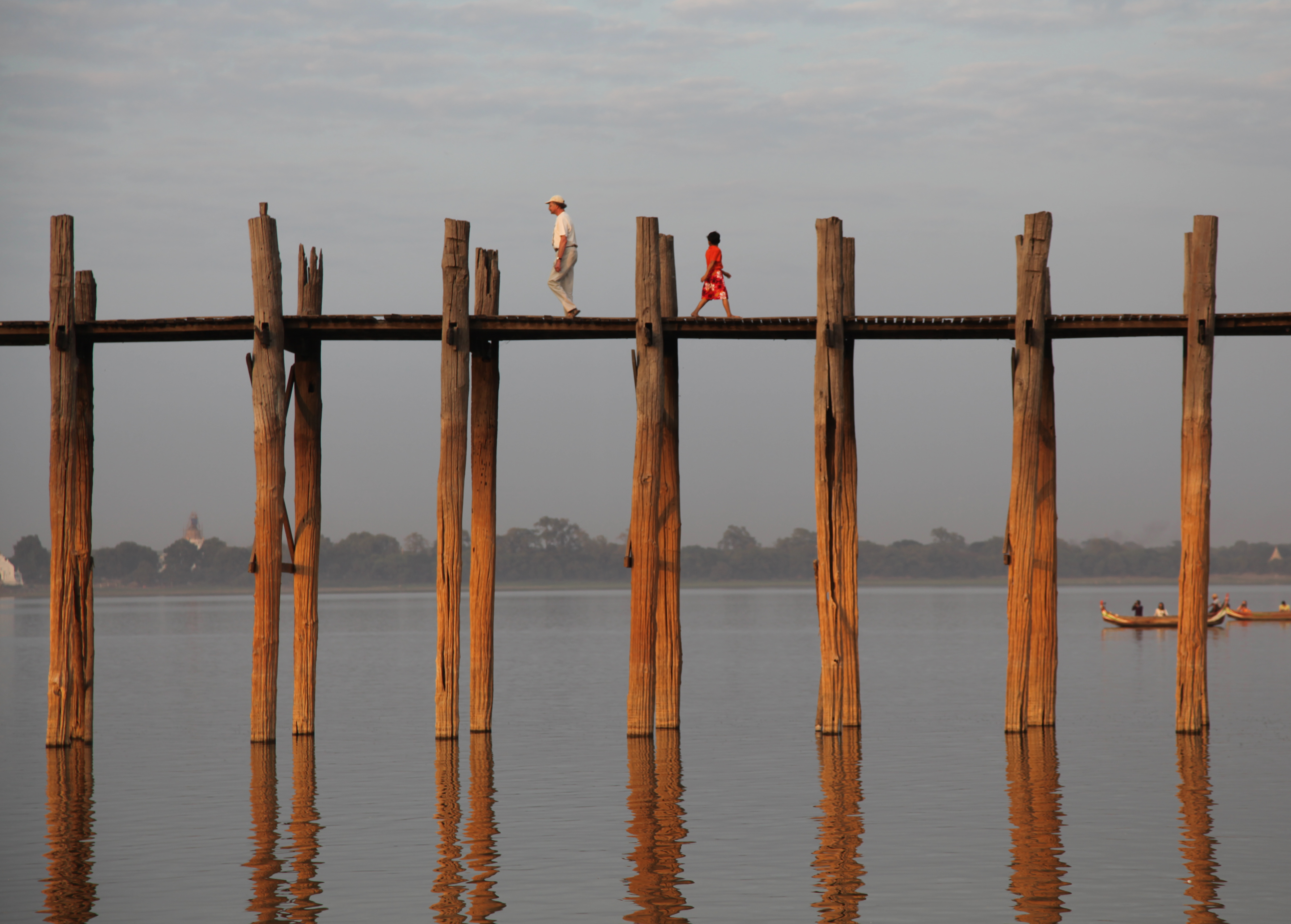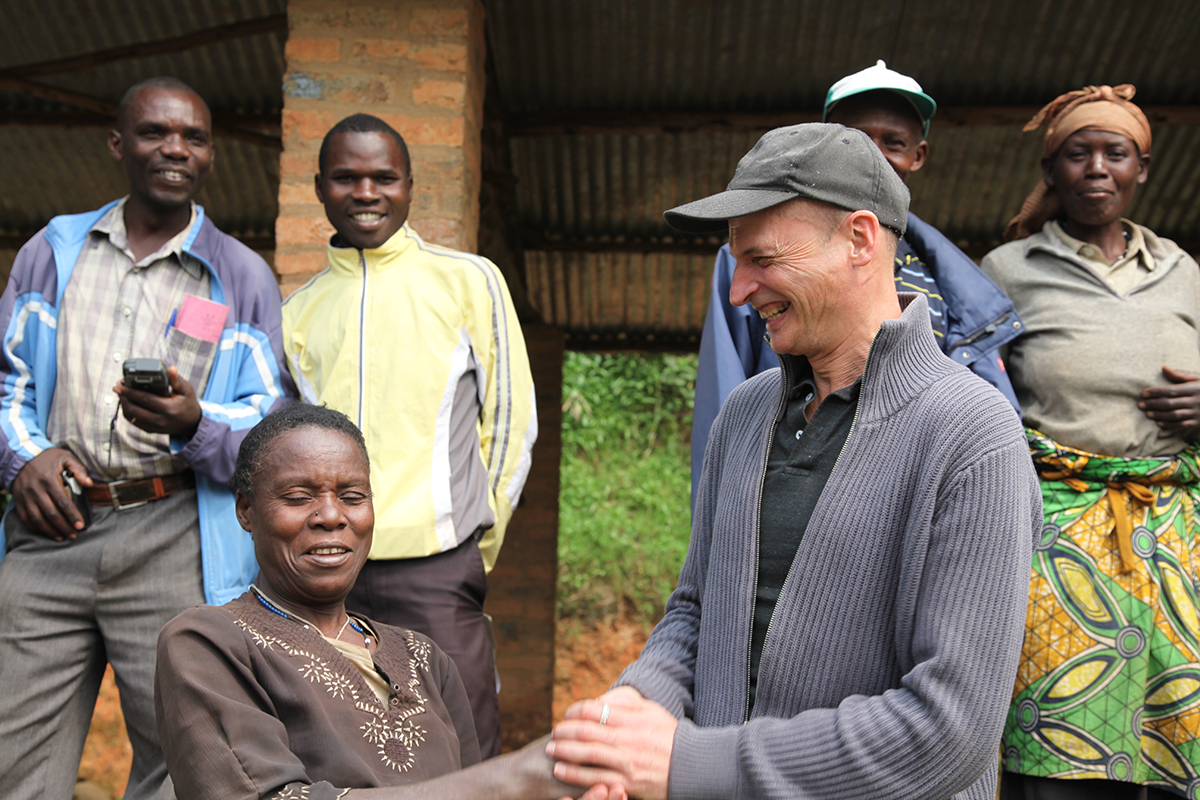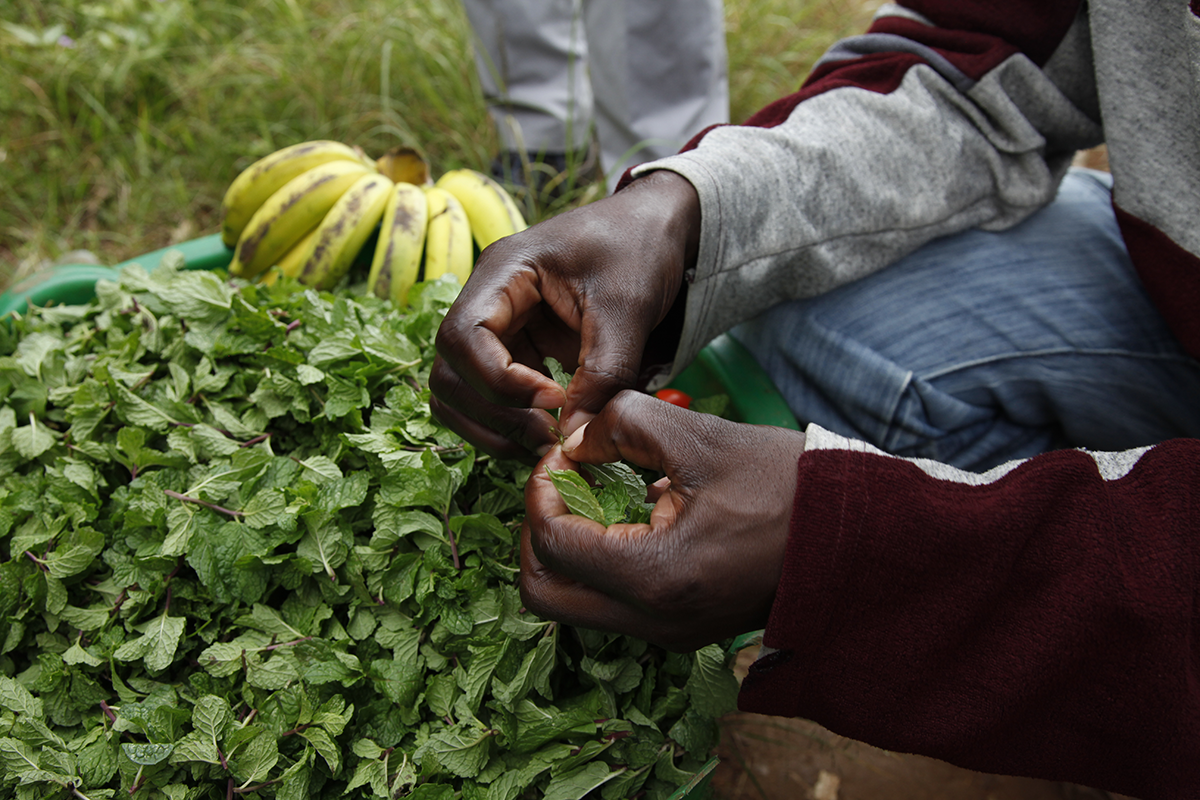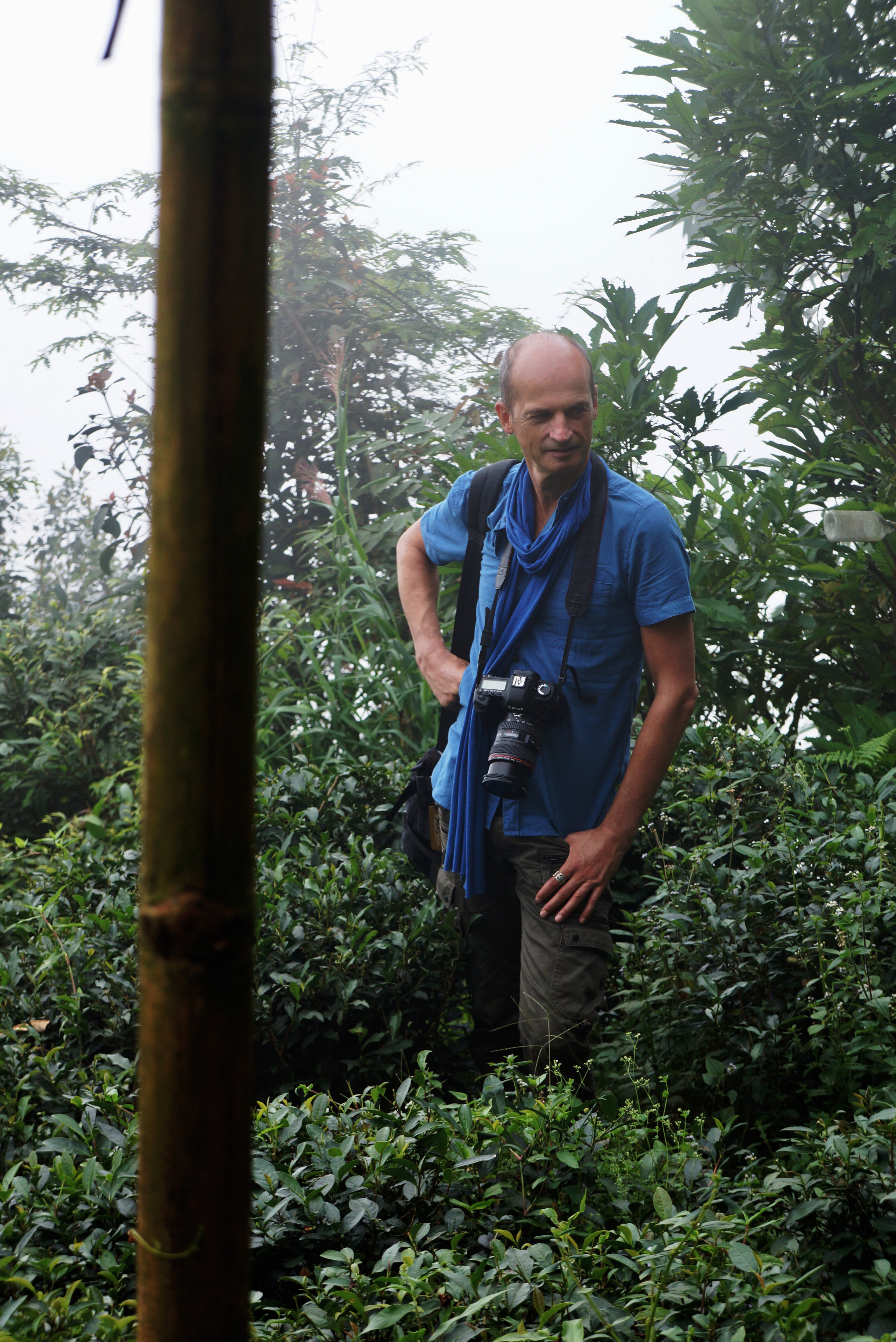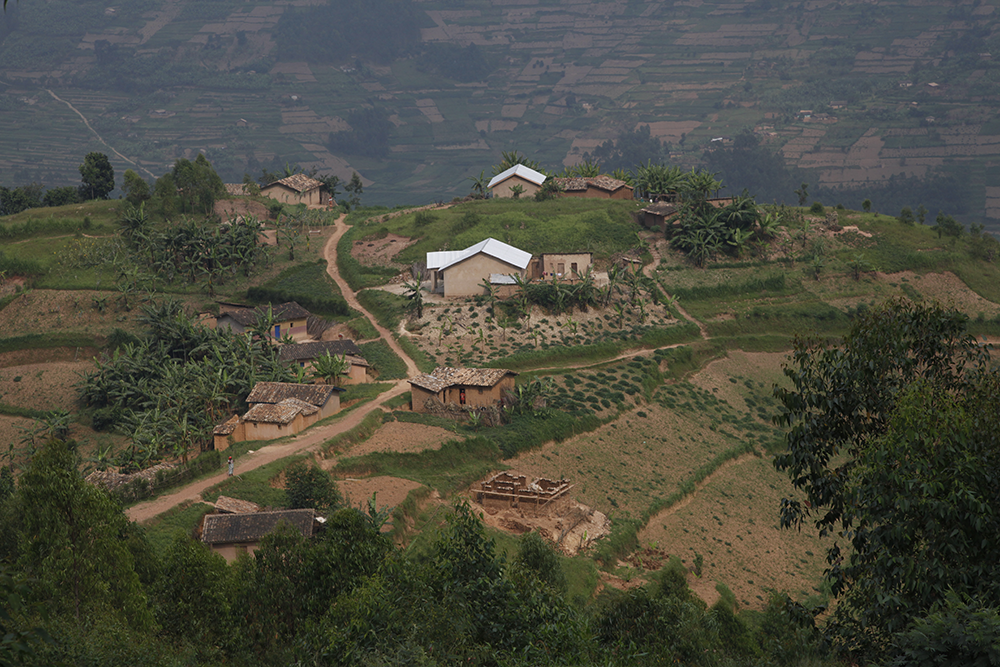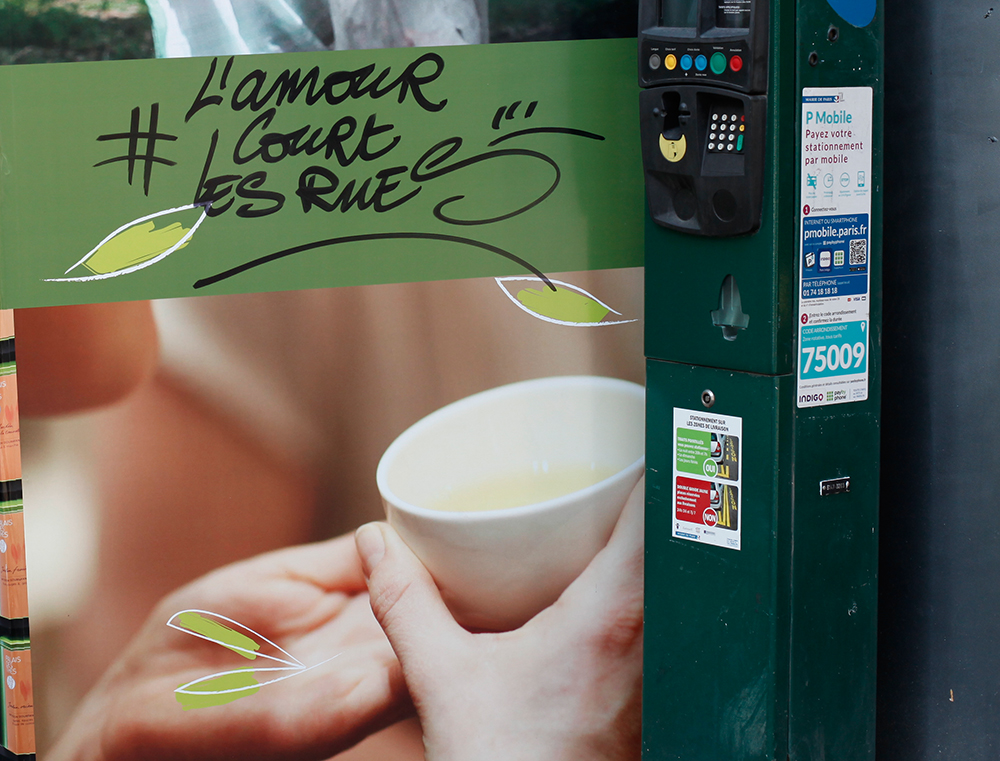I’m writing this in Kolkata, a city I love, and which deserves its nickname, City of Joy. The former Calcutta is also a city of tea. Most plantations in Darjeeling and Assam have an office here, as well as a tasting room. When I don’t have time to go to Darjeeling, I spend a couple of days here, which gives me a perfect panorama of the teas available. I go round visiting each of my friends in charge of exporting tea, and ask them as many questions as I can. If they’ve received samples of tea from the mountains, we taste them together. Right now, I can tell you that the situation is not good in Darjeeling. There hasn’t been a drop of rain since October. The temperature is two degrees higher than normal but, without water, the buds are growing at a rate that is alarming the planters.
Once I’ve finished my meetings, I walk down to the river and watch the waters of the Ganga flow past. Howrah Bridge is a symbol of the capital of West Bengal. I imagine all those little lights as prayers to make the rain come.
Emotions
Sakurajima
Tomorrow I’m leaving Japan and this island of Kyushu I love, this city of Kagoshima, this region of volcanoes, some of the most active on the archipelago. I’m leaving these beautiful and remote tea fields in the mountains, and I’ll show you some photos of them soon. But today I want to share with you my favourite photo, it’s of a volcano called Sakurajima, and I took it while at the Senga-en garden north of Kagoshima. This is one of the most beautiful bays in the world, and here, tea grows inland as well as on some of the islands that lie off the coast. Green tea, of course, but also some black teas that aren’t always necessarily that special but are starting to sell as far away as Tokyo.
In praise of shadows
If you want to get to know Japan, I recommend, as well as “The Empire of Signs” by Roland Barthes, “In Praise of Shadows” by Junichiro Tanizaki. I brought it with me to read here, in Japan. It talks about the relationship we have with light in the West and East: diffuse light versus direct light; a love of shiny things compared with a preference for matt. In the West, we want total light; elsewhere, like in Japan, more of a half-light. Tanizaki also talks about lacquerware, darkness, and Japanese cuisine, which go with shade. He says, about this cuisine, both the food itself and the dishes in which it’s served: “In the glare of harsh light, its aesthetic virtues would disappear in a flash.” He also says something I really like: “We Orientals make things beautiful by creating shadows in places that in themselves are insignificant.”
Enjoying a detour
Many people think I only visit the plantations at harvest time. This couldn’t be further from the truth. I like to meet a planter or farmer when he has time for me, and nothing to sell. When he’s not constantly preoccupied by the quality of the tea he’s making at that moment. In Japan, if I visit the tea fields during the first half of May, when the country’s finest teas are being produced, the farmer will have very little time to spare. He’ll look after me, of course, but he’ll be stressed, because from sunrise to sunset he’ll be dashing between fields and factory, and trying his best to be in both places at once. On the other hand, now, at the beginning of January, here in Japan, farmers have time to spare. We can sit down together and taste plenty of teas, we can walk along the rows of tea plants, and inspect every tool and machine. I can understand the farmer’s challenges and ask plenty of questions. Then we can go and have lunch together in a traditional hostelry and sing the praises of the local specialities, enjoy the way the room looks out over a small pond, admire the beautiful carp, talk about everything and nothing. That’s how you learn. I’ve learnt an enormous amount about tea and how it’s grown in this way, by taking my time. Much more than I would by coming in the harvest season and hurriedly tasting and buying what I need. In life, and particularly in Japan, nothing beats taking your time, not worrying about wasting it. There is nothing to lose by doing things slowly. This is how I do things in every tea-producing country. Sometimes I visit in the harvest season, but I know that I also need to be there to listen, to understand. Above all, it’s important not to imagine that nothing happens outside the harvests. And it’s important to value slowness, especially in Asia. Here, it’s best to avoid rushing, efficiency, yields. Instead, we can enjoy the experience of a detour.
Bridges that connect people
To accompany my New Year’s greetings to you, I’ve chosen this photo of a bridge. I love bridges, great and small. I love anything that spans a chasm and connects people. Some people build walls, others build bridges. There are people who shut themselves off, who want to surround themselves with barriers. Others throw down ropes or ladders into the void; they aren’t put off by precipices or obstacles or difficulties of any kind. They overcome them. Some people are fearful, some people are trusting. I wish you a Happy New Year full of bridges, challenges, daring. I hope you are able to follow your heart.
A job full of emotion
Naturally, I have emotions. I never return from my travels unmoved. Yes, in the strictest sense my job consists of visiting tea fields, talking with producers, tasting, and understanding how the tea is made. But in practice my work doesn’t stop there. It’s not just about tea leaves, plants, machines, flavours. Most of all, tea is about people. Men and women. Smiles, surprises, joy, pain, laughter, fear, curiosity, anxiety, fun, desires, challenges, suffering, pride, hopes and dreams… The people I meet up in the mountains give me all this. So as soon as I see a familiar landscape, I feel moved. I think back to the time I was there before, to the people. I remember what I learnt about life in those places. I remember my feelings. I don’t wear armour when I travel. A journey is like a shipwreck, and people whose boat has not sunk will never know the sea, wrote Nicolas Bouvier, a writer I love. So, sometimes I sink. I return a different person from when I set out; I’m not exactly the same on my return. And sometimes I don’t want to come back. I want to lose myself. People’s lives touch me, their emotions touch me. I have this incredible opportunity to meet people who are different from me, different in every respect – in their culture, religion, language, ethnicity. Different, but the same in that we are all human. And often, when I come back down from a mountain after spending several days up there, I need to rest. To take a break before I reach the valley. I need to sit at the roadside or at the edge of a field before going back to the city, before forgetting, forgetting why I left this place I already loved. When I come back down from my mountains, I need to stop, take a breath, not let things go too quickly. I need to dream, to cry, sometimes, to be aware of what I’m leaving, to not be in a rush. I simply need to breathe, to fill my lungs one last time with blue air; to live.
Farmers diversify their crops
This photo may seem odd, and rightly so: these aren’t tea leaves, but mint. However, this photo perfectly illustrates an aspect of my work. Many small producers around the world grow tea, harvesting and selling the fresh leaves to a co-operative, a farmer bigger than they are, or a company, who then processes the leaves. These small producers can sometimes have strong economic power, when demand for leaves is higher than supply. But more often than not they’re dependent on the buyer. So it’s always better if a small producer makes only part of their income from tea, and grows other crops alongside it such as potatoes, ginger, fruit and so on. This protects them from fluctuations in the price of tea, and gives them greater peace of mind.
Blue and green
Blue and green are my favourite colours. Blue, because the sea has been very important to me, and the island in Brittany where I spent all my childhood summers taught me a lot about life. The blue that comes and goes with the tides, a blue that turns green then brown when the tide goes out, the blue of the swollen sea, the blue of Brittany’s skies (though there are those who love its drizzly rain too)…
Blue and then green, the green of tea fields, the green of camellias, a dark green or a yellowish green, depending on the variety. A glossy green or matt green leaf, depending on whether you look at it from above or below. The green of the rice fields that meet the slopes covered with tea plants, the green of forests, so essential to keeping our climate balanced, the dark green of cryptomeria japonica, that spindly, rather bare tree that I love, found from Kyoto to Darjeeling, whose needles hold the mist so well. The green of the forest school I attended, the green of the countryside, of my little piece of nature where I’m so happy, the different greens of all the herbs I use to season my food, the green of young shoots, the green of springtime, the green of nature awakening; green, the symbol of life.
“What’s the news?”
There’s something no planter will ever stop me from doing, and that’s walking – setting out on foot for at least one or two hours, every day. I love it. Alone or in company, either way, I love to walk; I love meeting people, observing the changing light and weather, the beauty of blossom, the colour of cloth. I like to sit down on a doorstep and exchange smiles with people I know nothing about but with whom I share a connection, because we live on the same planet, of course, and also because tea probably plays a part in their lives too. You can learn a lot by walking: about the way people live, the methods they use to grow tea, the weather, the geography, and then all those colours and smells. Of course there are strange creatures too, sometimes snakes that are completely unknown, weird insects, things that jump. But I feel good. I sit on the edge of a rock when I want to admire something, when it’s beautiful, and simply because it’s good to take one’s time, to ask oneself what our purpose is on our small planet, to ponder the meaning of life. Tea makes you slow down. And tea also teaches you to be still, to learn to breathe, literally and figuratively; it teaches you to stop being so restless, running around from morning to night without really knowing why.
Here, three hours north of Kigali, on the little paths that wind through the mountains, there’s a lovely way to say “hello”. When you meet someone else, they greet you by raising their arms as if you’re a long-lost friend, with a joyful “Amakuru!” And this hello means “What’s the news?”
Love is in the streets
On the hoarding surrounding one of our stores during renovation work, above an image of a cup of tea held carefully in two hands (we don’t know if it’s being handed to someone or being admired, but we can tell it’s the focus of attention), there’s some graffiti that makes me happy. A friend pointed it out to me. It’s a statement, a piece of important news. It’s worth stopping to look at.
Usually, I tell you about my travels far away on the other side of the planet, often in the mountains covered in mist, but it’s also good to pay attention to one’s immediate surroundings, and not always tell oneself that the grass is greener, that life is undoubtedly better, elsewhere. L’amour court les rues. Love is in the streets. This is good news. Because we demand it, the media constantly bombards us with bad news and forgets to give us this essential information: love is in the streets.
From Paris to Bamako, from Brussels to Istanbul, we sometimes have reason to doubt it, but love is in the streets because it’s written here, and it’s much more newsworthy than some other events. The graffiti in question is actually located in a street that Saint Denis passed through, just after his head had been cut off, and he was holding it in his hands, on his way to the place where the basilica bears his name. So not only is love in the streets, but it came after the martyrs, reminding us that love is more powerful that all hatred put together.
What if this graffiti artist was right? What if love was in the streets and we didn’t notice it, because we didn’t have time, we weren’t present, weren’t paying attention, weren’t aware? Because we were lacking altruism, Matthieu Ricard would say? We must try to be happy, even if it’s just to set an example, wrote Prévert. We could try to make the streets a bit more human, smile at ourselves, be kind to ourselves whenever we can, look after ourselves, say thank you when appropriate, help ourselves when necessary. Yes, love is in the streets, so let’s welcome it instead of not seeing it, let’s make room for it. It’s up to us. Let’s not let it go.

